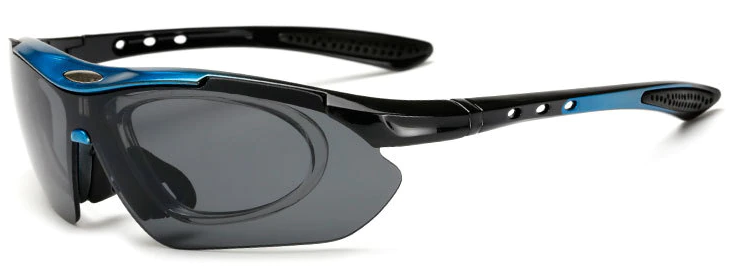The helmets + goggles for other sports cater more generously to the bespectacled.
For example, squash goggles come in two varieties, one fits like an ordinary pair of glasses, but withstand the up-to 200 km/hr speed of squash balls, and the other fit over prescription glasses, resting on the forehead with a band (that doubles, incidentally, as a sweat-wicking band) and with rubber pads on the cheeks.
Downhill skiing helmets are designed to hold the band for goggles in the back of the helmet. All goggles themselves accommodate prescription eyeglasses underneath with no difficulty. When cycling at -10°C I found that one's eyeballs start to freeze, and a skiing helmet + skiing goggles work perfectly. Eyeglasses alone are not a sufficient guard for eyes from the cold. But the skiing helmet is heavy, is far from ventilated enough for summer, and offers reduced visibility (but it works fine because fewer people venture on trails and roads at lower temperatures).
In last year's presentation of Tour de France 2022 several competitors (Cav at this point, among others elsewhere) were not worried about appearing with prescription eyeglasses. When they race they presumably switch to (put up with) contact lenses, and that is how they wear regular cycling goggles.
But what if I insist on not wearing contacts? What if I want to continue wearing prescription eyeglasses? So far I simply switch to prescription sunglasses during the day, but I would prefer to wear sunglass visors over clear prescription eyeglasses, as in squash or skiing. Some riders wear photogray lenses and accept their middle-of-the-road compromises. Either way, if the rider enters a cloud of gnats, having wider protection is a better safety guarantee to avoid being blinded for even a brief moment.
What are my options for keeping my prescription eyeglasses on and adding helmet+goggles while cycling?


